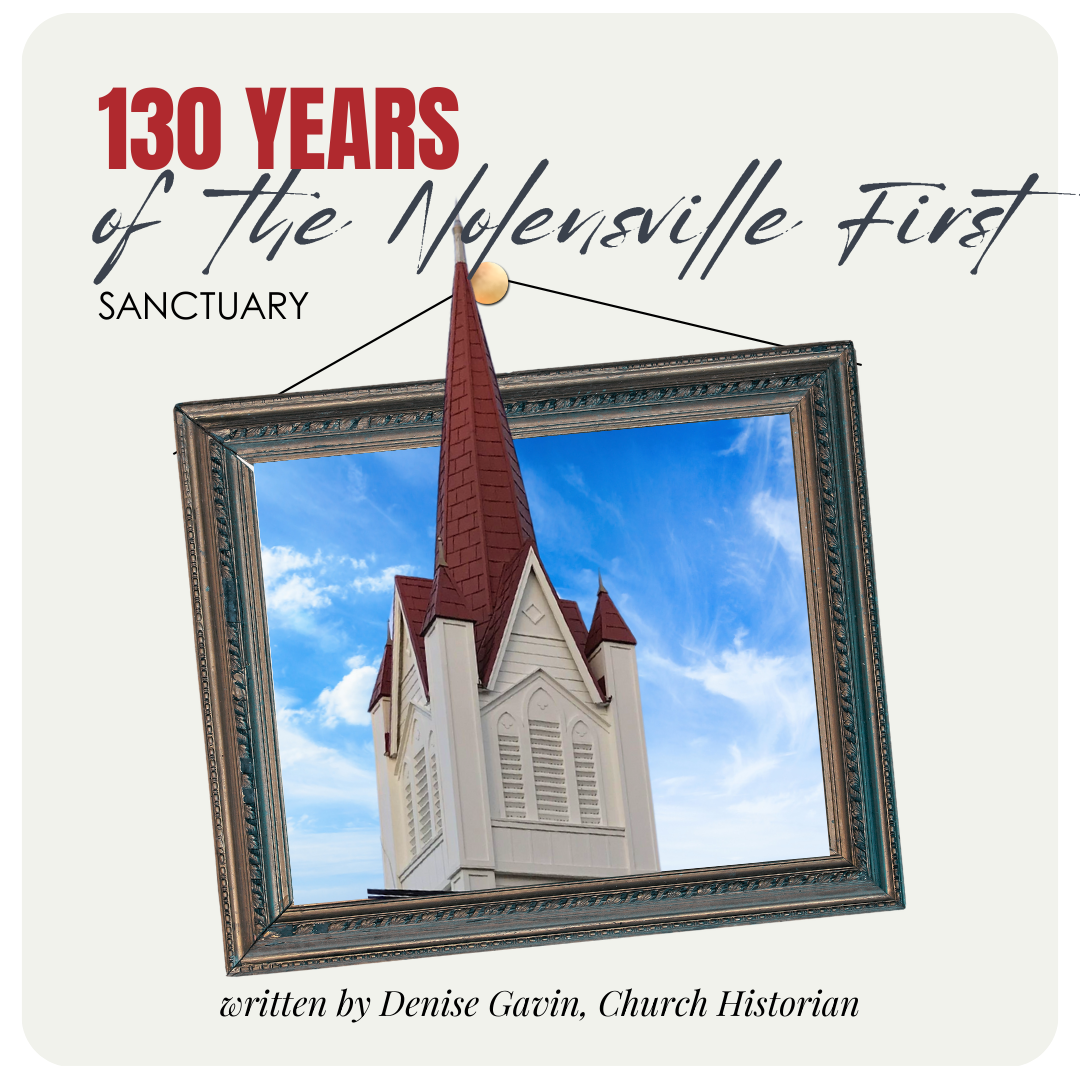Ways to Give
The History of Nolensville First United Methodist Church
1837-1853-1984
The history of our church, Nolensville First United Methodist Church, has been well documented through the years, there is even a historical plaque standing in front of the current church building. There have been three different church buildings, and four name changes since 1837. Why do we need to collect and discuss our Church History, you might ask; generally, the past has a direct influence on the future, and for us to have a clear picture of where we are headed, it’s always good to look at where we came from.
The United Methodist Church encourages that we set aside a day specific to celebrate our history; while we have been present in Nolensville since 1837, the property was purchased for the building of our current Sanctuary on September 14, 1894. We plan to celebrate 130 years of this beautiful, historic Sanctuary in September. Heritage Sunday calls the church to remember the past by committing itself to the continuing call of God. Between now and September, we’d like to share some interesting information about our church and our community involvement during the last 187 years.
When did it all start?
Our church was founded in the small village of Nolensville, as Mount Olivet Methodist Episcopal Church, in 1837 with a membership of 37 people. The first minister was thought to have been Reverend Benjamin R. Gant and the first building was located about 1.5 miles south of the village on the then Seals farm at Williams Road. The building was made of logs, with a brick foundation from clay dug in the area, and benches and floors made from split logs of the surrounding area. The building was utilized on weekdays as the school for the village children.
The first recorded deed for the Mount Olivet Methodist Church was dated December 12, 1839, when John Hay and Samuel F. Bittick deeded to Benjamin Johnson, Philip Owen, John Matthews, Benjamin T. King, and John Hay, as Trustees of the church and their successor trustees, two acres of land on which the church was located. These two acres were part of a 1000-acre land grant issued to William Hay from the State of North Carolina.
In 1844, the Methodist Church split, with some churches re-establishing as Methodist Episcopal South, honoring the Wesleyan Episcopal tradition, and showing allegiance to the South. Our church was then known as Mount Olivet Methodist Episcopal Church South. This first church building housed the congregation until 1853, as noted on the cornerstone located at the right of door entering the present-day sanctuary. However, the next deed of record indicating property ownership for Mount Olivet Methodist Episcopal Church South is 1858. Check in next month to learn about the second church building!
Our Church History

Our Vision:
To be a neighborhood church where people experience a life-changing relationship with Jesus in a welcoming church family.
Our Contact Info:
PO Box 249
Nolensville, TN 37135
Call: (615) 776-2815
Text: (615) 475-8108
Email: numc@nolensvilleumc.org
